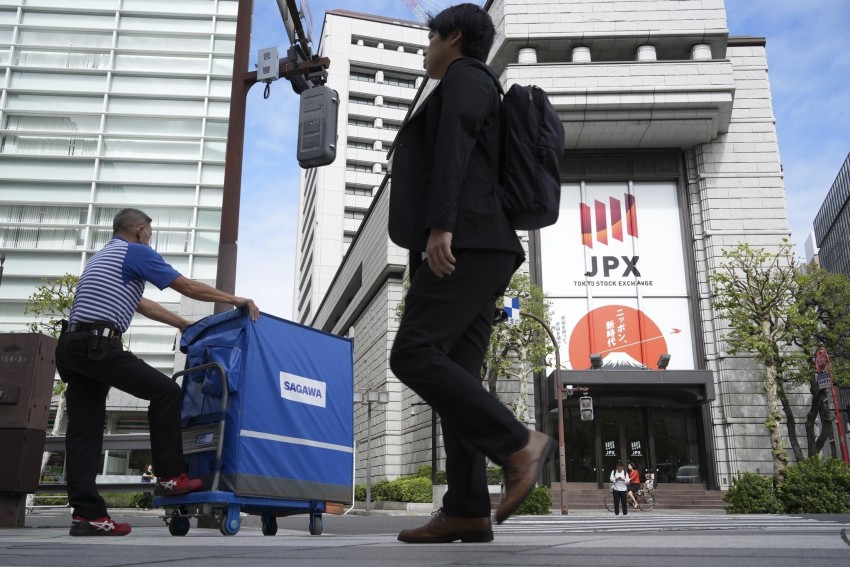Asian markets mixed; Japanese stocks rebound from Mondays slump

Asian shares were mixed on Tuesday, with Japan’s Nikkei 225 index regaining some of its sharp losses from a day earlier.
A quarterly “tankan” survey by the Bank of Japan showed business confidence among large manufacturers remained steady at 13, indicating an improved outlook for business conditions. A positive number indicates that more companies maintain an optimistic outlook on business conditions than those who feel pessimistic.
The survey is closely monitored for clues about the impact of the Bank of Japan’s interest rate decisions, especially after the central bank ended negative rates in March and raised its short-term rate to 0.25% in July.
Japan also reported that its unemployment rate for August fell to 2.5% from 2.7% in July, in line with market expectations.
Japan’s benchmark Nikkei 225 rallied 1.9% to close at 38,651.97 as the yen weakened. The dollar was trading at 144.44 yen, up from 143.62 yen.
On Monday, the Nikkei tumbled nearly 5% as markets reacted to the selection of Shigeru Ishiba to be Japan's next prime minister. Ishiba was due to take office Tuesday following the resignation of Prime Minister Fumio Kishida.
Ishiba, an expert on defense and on domestic economic issues, was seen as a less favorable choice than some of his rivals in the ruling Liberal Democratic Party, partly because he has voiced support for raising interest rates. That caused the Japanese yen to briefly jump in value against the dollar, which would hurt profits of large export manufacturers.
Australia’s S&P/ASX 200 dipped 0.9% to 8,195.90 after the data showed that retail sales in August rose 3.1% from the same period last year, which is above expectation.
Markets in China and South Korea were shut for holidays. Mainland Chinese markets, which had their best day since 2008 on Monday, will remain closed until Oct. 7 for the National Day break.
On Monday, the S&P 500 climbed 0.4% to reached an all-time high at 5,762.48 and clinched its fifth straight winning month and fourth straight winning quarter. The Dow Jones Industrial Average added less than 0.1% to 42,330.15. The Nasdaq composite rose 0.4% to 18,189.17.
Wall Street has catapulted to records on hopes the slowing U.S. economy can keep growing while the Federal Reserve cuts interest rates to offer it more juice. A big test will arrive Friday, when the U.S. government offers its latest monthly update on the job market.
An overriding worry on Wall Street is whether the economy may already be heading for a recession. Even though the Fed cut rates earlier this month and has indicated more relief is on the way, U.S. employers have already begun paring back on their hiring. Before this month, the Fed had kept interest rates at a two-decade high in hopes of slowing the economy enough to stamp out high inflation.
In the bond market, U.S. Treasury yields rose after investors took comments from Fed Chair Jerome Powell as a hint that coming cuts to interest rates may be more traditional sized.
The Fed began its rate cuts with a larger-than-usual reduction of half a percentage point, and many traders expect the next meeting in November could yield a similar sized reduction. Fed policy makers already had indicated they were planning two more cuts this year of the traditional size of a quarter of a percentage point.
But Powell said again on Monday that rate cuts are not something the Fed needs to work quickly on. After his comments, traders were betting on just a 35% probability the Fed will cut rates by another half a percentage point in November. That’s down from a 53% chance seen the day before, according to data from CME Group.
The yield on the 10-year Treasury rose to 3.78% from 3.75% late Friday.
In other dealings Tuesday, benchmark U.S. crude oil added 12 cents to $68.29 per barrel. Brent crude, the international standard, rose 11 cents at $71.81 per barrel.
The euro was trading at $1.1138, up from $1.1134.













